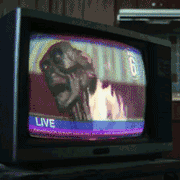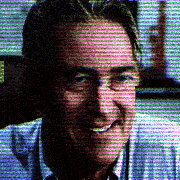|
You know how sometimes your OS gets hosed up and you have to wipe everything clean and reinstall? Why can't we do that to our brains 
|
|
|
|

|
| # ? Apr 30, 2024 07:36 |
|
You can, it just hurts a lot.
|
|
|
|
Prisoner OS 7.6 Alpha overnight build 132
|
|
|
|
Knormal posted:You can, it just hurts a lot. Teach me
|
|
|
|
Big Scary Owl posted:Teach me
|
|
|
|
Its a living.
|
|
|
|
I'd like to replace the body hardware myself It keeps breaking and it didn't even work properly to begin with
|
|
|
|
have you tried ECT or ketamine
|
|
|
|
https://www.youtube.com/watch?v=Azr7A69CV3o
|
|
|
|
Big Scary Owl posted:You know how sometimes your OS gets hosed up and you have to wipe everything clean and reinstall? Why can't we do that to our brains https://www.psychiatry.org/patients-families/ect What is Electroconvulsive therapy (ECT)? Electroconvulsive therapy (ECT) is a medical treatment most commonly used in patients with severe major depression or bipolar disorder that has not responded to other treatments. ECT involves a brief electrical stimulation of the brain while the patient is under anesthesia. It is typically administered by a team of trained medical professionals that includes a psychiatrist, an anesthesiologist, and a nurse or physician assistant. Does ECT Work? Extensive research has found ECT to be highly effective for the relief of major depression. Clinical evidence indicates that for individuals with uncomplicated, but severe major depression, ECT will produce substantial improvement in approximately 80 percent of patients. It is also used for other severe mental illnesses, such as bipolar disorder and schizophrenia. ECT is sometimes used in treating individuals with catatonia, a condition in which a person can become increasingly agitated and unresponsive. A person with catatonia can seriously injure themselves or develop severe dehydration from not eating or drinking. ECT is typically used when other treatments, including medications and psychotherapy, havenít worked. ECT is also used for people who require a rapid treatment response because of the severity of their condition, such as being at risk for suicide. ECTís effectiveness in treating severe mental illnesses is recognized by the American Psychiatric Association, the American Medical Association, the National Institute of Mental Health, and similar organizations in Canada, Great Britain and many other countries. Although ECT can be very effective for many individuals with serious mental illness, it is not a cure. To prevent a return of the illness, most people treated with ECT need to continue with some type of maintenance treatment. This typically means psychotherapy and/or medication or, in some circumstances, ongoing ECT treatments. What are the steps involved when getting ECT? Before beginning a series of ECT treatments, a patient should receive a thorough psychiatric assessment, including a medical examination and sometimes a basic blood test and an electrocardiogram (ECG) to check heart health. Informed consent is another important part of the process. A patient must provide written informed consent before ECT is administered. In situations where a person is too ill to make decisions for him or herself, the consent process is governed by state law (for example, a court-appointed guardian). Patients and their families should discuss all options for treatment with the psychiatrist before making a specific treatment decision. They should be provided with sufficient information to fully understand the procedure and the potential benefits, risks, and side effects of each treatment option before providing written consent. A patient typically receives ECT two or three times a week for a total of six to 12 treatments, depending on the severity of symptoms and how quickly the symptoms respond to the treatment. At the time of each treatment a patient is given general anesthesia and a muscle relaxant and electrodes are attached to the scalp at precise locations. The patient's brain is stimulated with a brief controlled series of electrical pulses. This causes a seizure within the brain that lasts for approximately a minute. The patient is asleep for the procedure and awakens after 5-10 minutes, much as from minor surgery. Most insurance plans offering coverage for psychiatric disorders at least partially reimburse the cost of ECT. What are the Risks and Benefits? Like any medical procedure, ECT is has some risks. ECT treatment has been associated with short-term memory loss and difficulty learning. Some people have trouble remembering events that occurred in the weeks before the treatment or earlier. In most cases, memory problems improve within a couple of months. Some patients may experience longer lasting problems, including permanent gaps in memory. The risks of general anesthesia, which is needed for ECT, are similar to the risks when anesthesia is used for other procedures such as minor surgeries. The most common side effects of ECT on the day of treatment include nausea, headache, fatigue, confusion, and slight memory loss, which may last minutes to hours. These risks must be balanced with the consequences of ineffectively treated severe psychiatric disorders. For some patients, the risks of ECT may be less than those of ongoing treatment with medications. ECT can work more quickly than medications. It can be especially useful if a patient is suicidal, is not responding to medications or cannot tolerate the side effects of medication. Other Brain Stimulation Treatments Transcranial Magnetic Stimulation (TMS) is used to treat depression that has not responded to other therapies. It involves the use of rapidly alternating magnetic fields to stimulate specific areas of the brain. Unlike ECT, TMS does not cause a seizure and the patient remains awake through the noninvasive process. TMS typically only has mild side effects including headaches, muscle twitches and pain at the stimulation site. TMS is usually administered four or five times a week for four-to-six weeks. Vagus Nerve Stimulation (VNS) was developed as a treatment for seizure disorders but can also be used to treat depression that has not responded to other therapies. It involves implanting an electrical pulse generator under the skin in the patientís chest that provides intermittent electrical stimulation to the vagus nerve in the neck.
|
|
|
|
ECT does seem good, I need to see if there's someplace nearby that has it.
|
|
|
|
yospos
|
|
|
|

|
| # ? Apr 30, 2024 07:36 |
|
Big Scary Owl posted:You know how sometimes your OS gets hosed up and you have to wipe everything clean and reinstall? Why can't we do that to our brains idk it took me a pretty long time to learn how to read and stuff so not sure im willing to have to sink more time into it.
|
|
|














